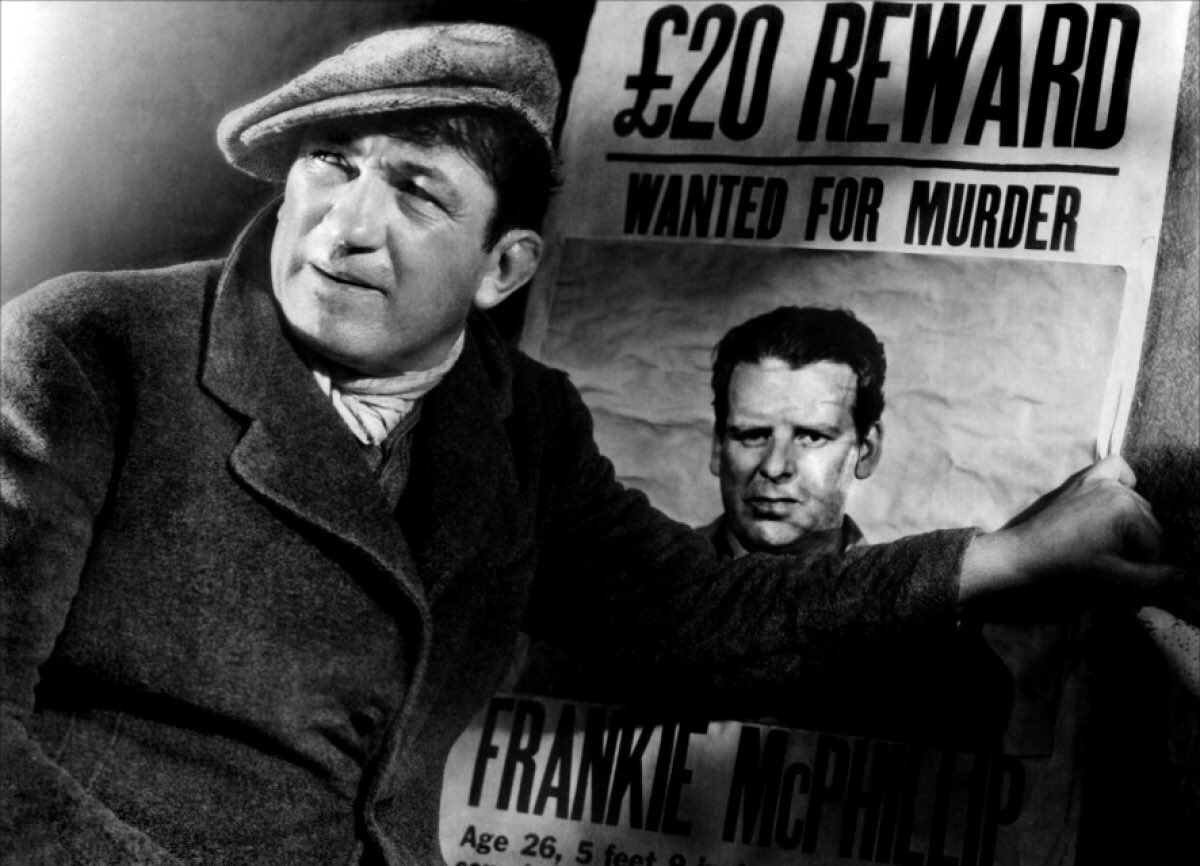One Foggy Night
You wouldn’t normally think of John Ford as directing a low-budget art film, but that’s the best way to think of The Informer (1935). According to Joseph McBride’s excellent book Searching for John Ford, the project was rejected by Columbia, Fox, MGM, Paramount, and Warner Bros. before RKO agreed to let Ford make it on a shoestring budget (the final production costs were $242,756). That meant almost no money for sets and only 18 days for shooting.
Rather than fret about the restrictions, Ford, screenwriter Dudley Nichols, and cinematographer Joseph August crafted a visual story that’s defined primarily through shadows, fog, and backlighting. The style is reminiscent of the great silent German expressionist films, especially those of F. W. Murnau, whose work Ford admired.
In his 1943 essay “The Writer and the Film,” Nichols explained how this approach was an excellent match for the storyline:
I had an able mentor as well as a collaborator in the person of John Ford and I had begun to catch his instinctive feeling about the film. I can see now that I sought and found a series of symbols to make visual the tragic psychology of the informer, in this case a primitive man of powerful hungers. The whole action was to be played out in one foggy night, for the fog was symbolic of the groping primitive mind; it really is a mental fog in which he moves. . . .
Though often shy and reserved in real life, Ford could be a hard taskmaster when directing. He had to fight RKO to cast former boxer Victor McLaglen as Gypo, the central character. As McBride explains in his book:
Ford directed McLaglen with cunning calculation, bullying and tricking him into giving a great performance. Since he wanted McLaglen to grope for his lines to convey Gypo’s slow-witted, half-drunken condition, Ford continually changed the schedule to keep McLaglen unfamiliar with his scenes and surreptitiously filmed what the actor thought were rehearsals. He would send McLaglen off to run his lines with cast member J. M. Kerrigan at the nearby Melrose Grotto bar, and then would abruptly call a tipsy McLaglen back to the set to shoot his scenes.
The result is paradoxically realistic and expressionistic. The Informer was a popular success and widely praised by the critics. Though it came in second to Mutiny on the Bounty for the Oscar for Best Picture, Ford took home the Best Director award. In addition, McLaglen won Best Actor, Nichols won Best Screenplay, and Max Steiner won Best Musical Score. Though some of the symbolism may seem heavy handed, and the ending a bit forced, everything else works terrifically. And it doesn’t appear to be made under severe financial restraints. All the choices seem to be natural extensions of the plot.
The Informer
(1935; directed by John Ford)
Warner Home Video (DVD)
Tuesday, March 15 at 1:00 a.m. eastern (late Mon. night) on Turner Classic Movies
Reviews